Every year brings with it a host of interesting new discoveries when it comes to coral reef fishes, and 2017 certainly had its share. I discussed some of the year’s most exciting new fish species in a previous article, and, for this one, we’ll relive all the interesting interspecies hybrids, phenotypic aberrations, and notable range expansions that were documented for the very first time. As with any top ten list, some notable entries had to be left out, so lets first give honorable mention to some of those who didn’t quite make the cut, like the bicolor Scopas Tang… the faux-Guezei Angelfish… and the Orangefin Powder Brown Tang.
#10) A Swisscave Basslet?!
Back in March, the world was greeted with the first images of what was reputed to be a hybrid of the Swissguard Basslet (Liopropoma rubre) and the Cave Basslet (L. mowbrayi). These two closely related species coöccur throughout the Caribbean and occupy similar ecological niches, but typically at different depths. So was it an overly adventurous Swissguard Basslet that descended into the dimly lit realm of the Cave Basslet to mate, or was it instead the latter which ascended into the sunny climes of the shallows to spawn with its striped cousin. In either case, the alleged offspring looks shocking like their Pacific congener, Liopropoma colletti. Of course, it’s also possible that this is merely an aberrant L. rubre.
#9) The First Aquarium Signalfish
This wasn’t really a “discovery” per se, but it was certainly a long time coming. It’s difficult to find a group of shallow-water tropical marine fishes which hasn’t already been collected for the aquarium trade, but somehow this seemed to have been the case for the hemerocoetid signalfishes up until February of this year. These small creatures typically reside in mesophotic depths, often in areas that experience relatively strong currents from cool upwellings, making them a chore for divers to capture. The most lovely member in this group is the Midwater Signalfish (Pteropsaron longipinnis), which floats gracefully above the bottom as its exaggerated fins drape through the water. Credit for this find goes to the talented collectors at RVS Fishworld, who found this specimen on the western side of Luzon in the Philippines.
#8) Lamarckispilos Angelfish
One of the most frequently encountered hybrids among the Swallowtail Angelfishes involves Genicanthus melanospilos X G. lamarckii. Several have found their way into the hands of aquarists over the years, but an especially attractive individual was documented in Cebu by Aquarius Divers. With Genicanthus having been captively bred, perhaps its time aquaculturists turn their attention towards this gorgeous mix?
#7) A New Surgeonfish?
Acanthurus is one of the most diverse and abundant groups of coral reef fishes, and, up until February, there hadn’t been a new species described in this genus from the West Pacific since the advent of scuba diving in the 1950’s. Enter the Whitechin Surgeonfish (Acanthurus albimento), an enigmatic taxon described back in February for a half-dozen odd specimens found in fish markets of the Northern Philippines. The authors of this species noted that its DNA didn’t match any existing data sampled from this genus, leading them to the conclusion that this was a novel discovery. But, as I explored in some depth, there is another plausible explanation—this could simply be a hybrid of a known West Pacific species that hasn’t yet been genetically sequenced. The most likely culprit… a female Acanthurus fowleri and a male A. barieni.
#6) A New Stonogobiops… yes, please!
The first good images of this colorful new shrimpgoby appeared courtesy of Simon Buxton and the NAD Dive Resort in Lembeh, Indonesia. Specimens have been repeatedly observed in pairs, which tells us that this is almost certainly a new species and not just a single aberrant or hybrid specimen. It’s most noteworthy features are the black tip to the pelvic fin and the translucent yellow finnage. To date, it’s only in Lembeh that this beautiful Stonogobiops has been encountered, though it must surely range further. The question is, how much further? Is this species genuinely restricted in its distribution, or are we just bad at finding it in the wild?
#5) Hawaiian Ctenochaetus Hybrids
Not one, but two strange bristletooths were chanced upon in the waters of Hawaii. The first, courtesy of Colin at Zoa Collector, appears to be a mix of the endemic Kole Tang (Ctenochaetus strigosus) and its neighbor to the south, Polynesia’s Whitetail Tang (C. flavicauda). The latter has never been documented before in the Hawaiian Archipelago, making this an important addition to our understanding of how fish colonize this isolated island chain. The other find, acquired by Pacific Island Aquatics, is potentially a Kole X Chevron Tang (C. hawaiiensis). These two species are both native to Hawaii’s waters, but, for whatever reason, hybrids were seemingly unknown until now. Alas, with aquarium collection no longer allowed in the region, it’s become less likely that we’ll see more of these interesting fishes for the time being.
#4) First Ever Latezonatus Hybrid
https://www.facebook.com/100014971123131/videos/220594961782873/
Australia has a pair of unique subtropical anemonefish lineages along its eastern shores, and, for the first time, a hybrid between them was documented and exported into the aquarium trade. The Akindynos Anemonefish (Amphiprion akindynos) is an abundant species in New South Wales, and hybrids of it have been reported before with the Great Barrier Reef’s still undescribed variant of the Amphiprion clarkii complex, as well as the closely related Lord Howe Anemonefish (A. mccullochi). On the other hand, the distantly related Wideband Anemonefish (A. latezonatus) has never been known to interbreed within its genus, making this an especially juicy find. Rare fish collector Chung Wing Hung was fortunate enough to snag this one of a kind specimen and kindly shared the video seen here.
#3) The First Photographed Leopard Wrasse Hybrid
Coral reef labrids seem to be especially prone to producing interesting hybrids, but, strangely, this hasn’t been the case for the leopard wrasse genus Macropharyngodon. To date, the only published images of a hybrid from this group appeared earlier this year from Hong Kong’s Red Heart King Aquarium. This specimen originated from Kenya and appears to involve two species endemic to the Western Indian Ocean… Vivien’s Leopard Wrasse (Macropharyngodon vivienae) and the Splendid Leopard Wrasse (Macropharyngodon bipartitus).
#2) Lanceolatus Fairy Wrasse In The Philippines!
Among fairy wrasse enthusiasts, Cirrhilabrus lanceolatus is a legendary and nearly unattainable species. Fully grown specimens are enormous fishes, with mature males developing an extraordinary elongation to the caudal fin, which gives this species its name. Prior to this year, this piscine holy grail had only been reported from the deeper reefs of Japan, and then RVS Fishworld surprised the world by successfully hauling up four specimens from a staggering 200 feet deep. These were found at Scarborough Shoal, an isolated sunken atoll to the west of Luzon that has only recently been opened up to aquarium collection. Aside from this wrasse, these reefs also yielded an impressive trove of Xanthichthys triggerfishes, including what may or may not be the first documented juvenile of the Goldenback Triggerfish (X. caeruleolineatus).
#1) The Bluespicuous Angelfish
The captive breeding of marine fishes has advanced dramatically in recent years, and it seems like every few months brings with it the announcement of some new and exciting species that has been captively bred and made commercially available for the first time. Poma Labs is an exciting new venture from the braintrust of noted aquaculturist Dr. Matt Wittenrich and Piscine Energetic’s Nuri Fisher, and they made waves at this year’s MACNA with the introduction of several new captively bred Chaetodontoplus angelfishes. Among these was the famed Conspicuous Angelfish (C. conspicillatus), a South Pacific rarity that is among the ultimate trophy fishes within the aquarium trade.
But what’s even rarer is the first ever hybrid of the Conspic and its equally gorgeous cousin, the Blueline Angelfish (C. septentrionalis). This is an artificial pairing in every sense of the word, as these two fishes would never encounter one another in the wild. Fortunately, this specimen found its way into the hands of aquarist Ted Krupman, who has been keeping us all updated on its progress. So far, there are some encouraging traces of the Conspic’s blue facial markings beginning to poke through, but no sign as of yet of any blue lines along the body. Stay tuned in 2018 for more on this incredible angelfish…

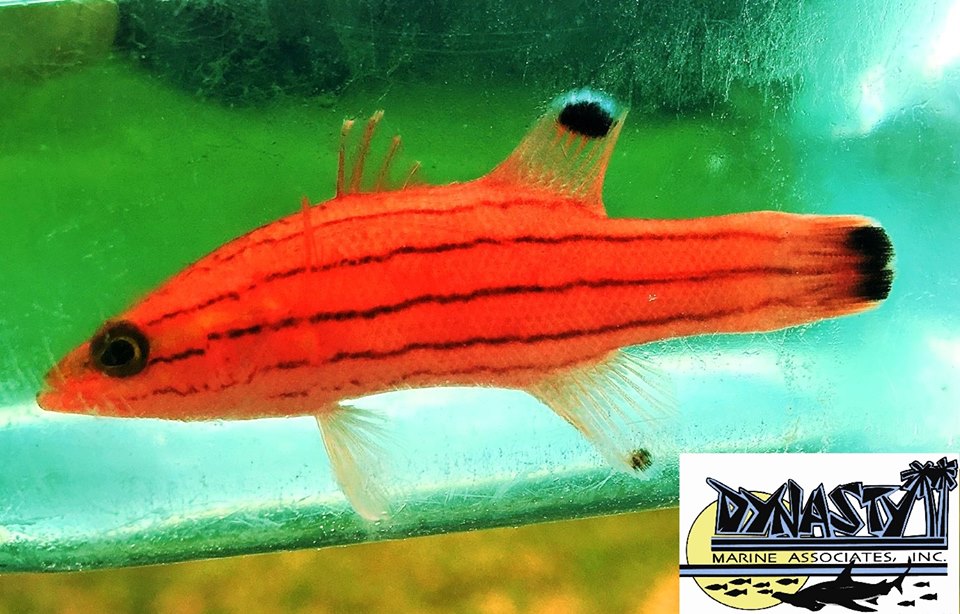
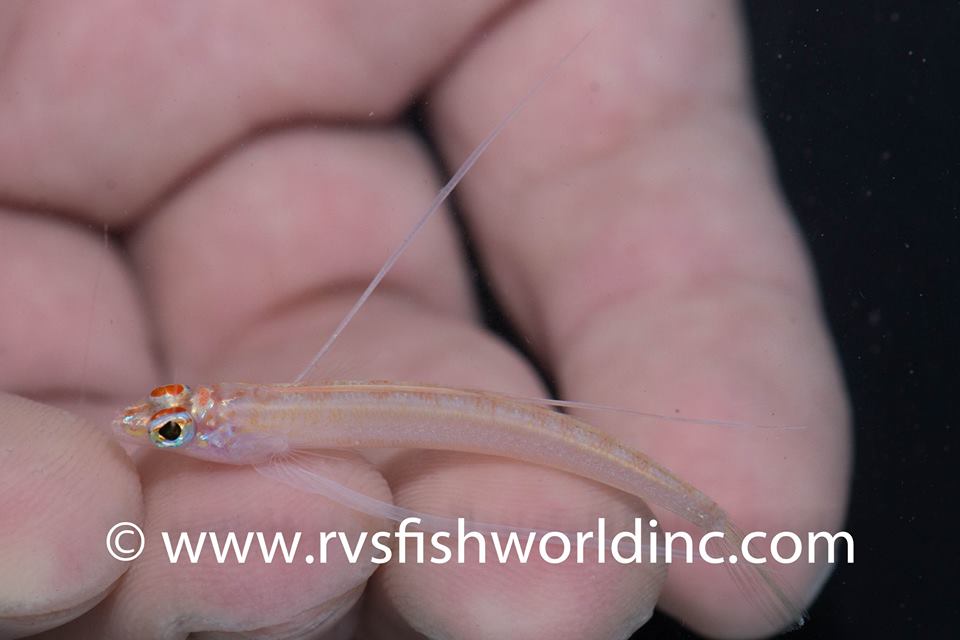
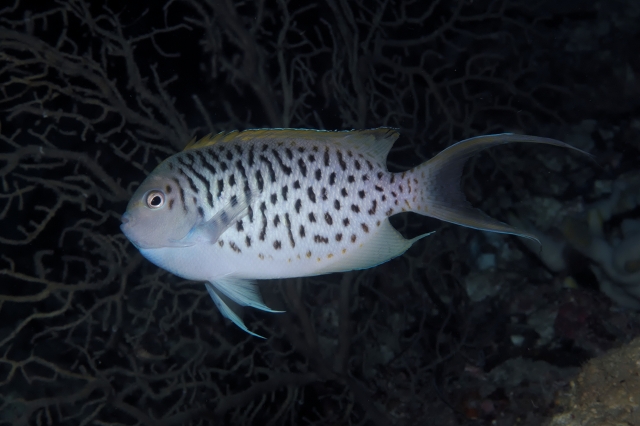
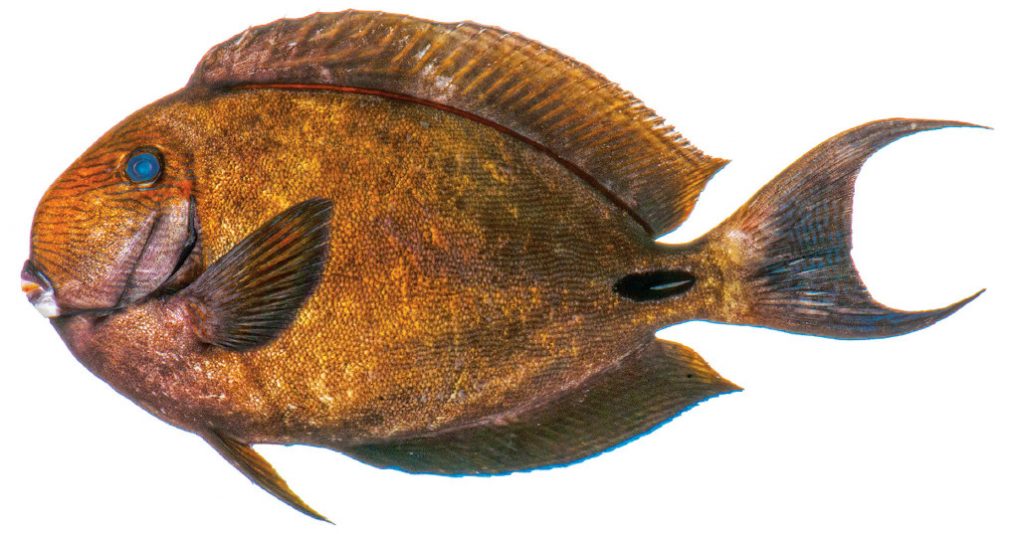
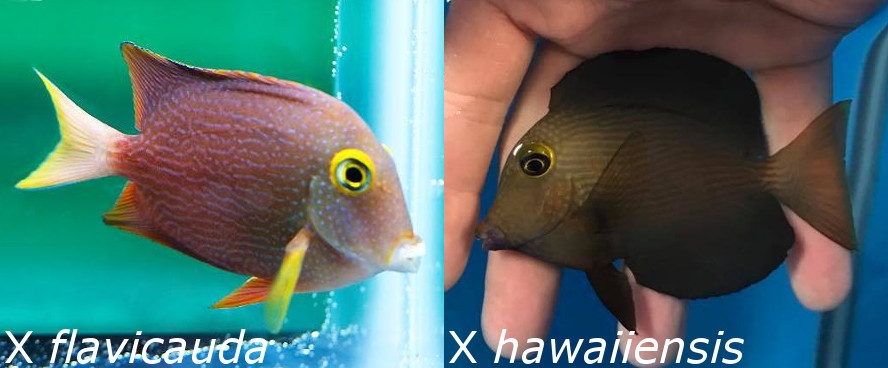
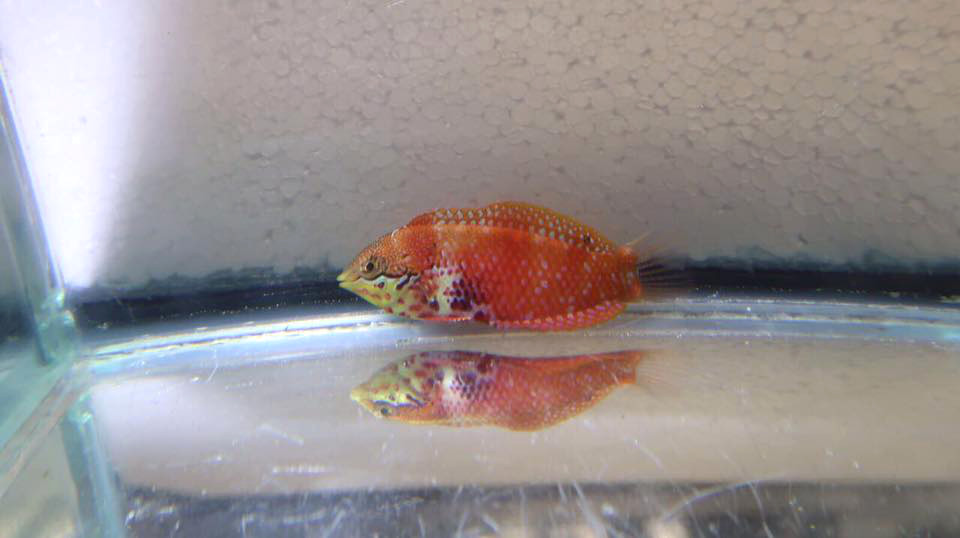
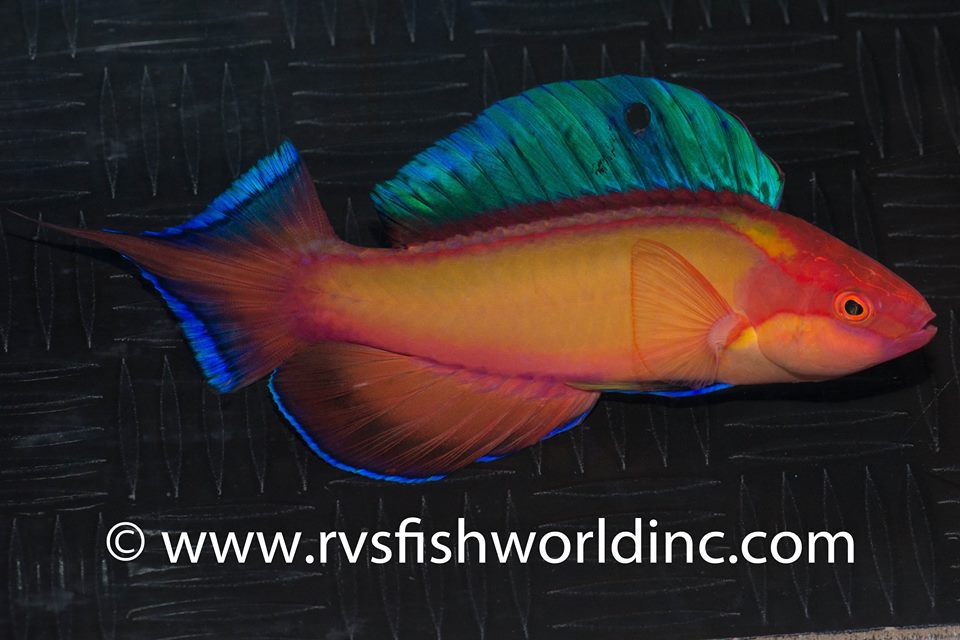
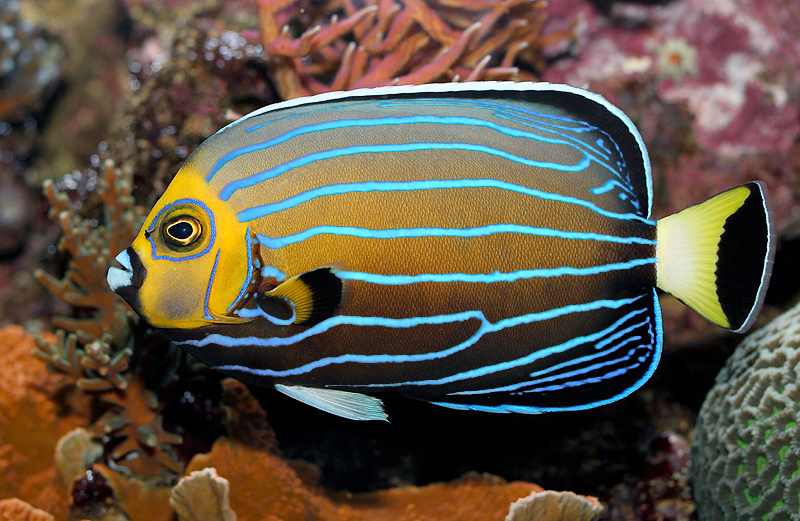










0 Comments